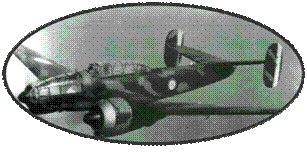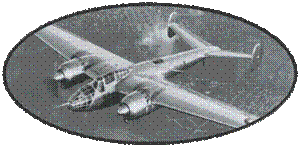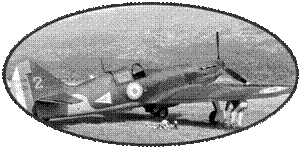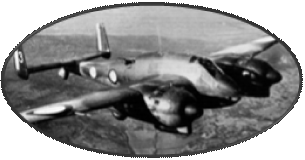The Potez 630 is the result
of a program of 1934 to equip the Air Force with a "Multiplan
Light" aircraft capable of fulfilling missions of Hunting Command,
Two-seater of escort and Two-seater fighter of Night. The Potez
630 competes with the Breguet 690, Romano 110, Loire-Nieuport
20, Hanriot 220.
The Potez 630's study deadlines
are rather short: the first prototype was manufactured in April
1935 and was completed in early 1936 with a first flight on April
25, 1936, to the hands of the Nicolle test pilots. The prototype
is powered by two Hispano-Suiza 14Hbs of 580ch. The aircraft is
well-born, and shows good flying qualities. Beginning August 1936,
it was transferred to Villacoublay to undergo some modifications.
The wooden bi-rudder is replaced by a metallic model, and it receives
a new landing gear. The manufacturer's tests end at the end of
November 1936, and the CEMA (Aircraft Testing Center) will accept
the aircraft at the end of December. The official test campaign
can begin. The original engine is replaced by Hispano-Suiza 14ab
02/03, then by HS14 Ab 10/11. After acceptance of the aircraft
by the Air Force, the first Potez 630 aircraft took the Air in
February 1938 and the first aircraft were delivered in units in
May 1938 (GCN III / 1 and GC II / 4) Where they will be used as
Fighter Controls, replacing advantageously the old Bloch MB200.
However, as a result of
recurring engine problems, the Potez 630s were removed from the
first lines as early as September 1939, and were then used as
training apparatus. They will be replaced gradually by the Potez
631, derived version equipped with engines Gnome Rhone GR 14 Mars
which had made its first flights in February 1937. The only visible
difference between the two models is the air intake located on
the top of the hood on the Potez 630, and below Potez 631. These
are delivered in units as of August 1938.
To note an interest of
the foreign countries for this aircraft, since Switzerland and
Yugoslavia each purchase two Potez 630s, while Potez 631 will
interest Yugoslavia and China, respectively, with 1 and 4 aircraft
ordered.
The Potez 631 will essentially
equip the Night Fighter Squadron (ECN) and the ECMJ16 (Day Crew
Squadron), and the Air Force will yield some used Potez 631 to
Naval Aviation to equip its squadrons AC1 and AC2. In order to
reinforce its firepower, it was decided in March 1940 to equip
the Potez 631 with four additional 7.5mm machine guns under the
wings: but it was only in May that the first units were changed
into units. ..
At the beginning of the
conflict, 117 Potez 631 were in units. Apart from the missions
of fighting, some units equipped with Potez 631 were used to attack
the German armored columns, without great success and at the cost
of big losses.
During the campaigns of
the Campaign of France, the Potez 631 will be victim of its resemblance
to the Messerschmitt BF110. This led to tragic mistakes by the
DCA or the French Fighter. A Potez 631 will even be forced to
shoot down a D520, which despite the efforts of the pilot of Potez
to show his cockades, will make several attacks on the twin-engine.
The Potez 631 will finish
the campaign of France with a modest palmares of 17 Victories.
At the Armistice, most
of the Night Fighter Squadrons were dissolved (except the ECN
I / 13 and 4/13) and the few Potez 630 and 631 (6 and 64) survivors
during the dissolution of the Vichy Aviation In November 1942
will be sent to Romania, allied to Germany, to become training
aircraft or target tugs. Germany and Italy will also use some
aircraft captured as school aircraft.
The Potez 631 will have
been penalized throughout its career by its sub-motorization,
which will prevent it from effectively fulfilling the missions
for which it was planned.













